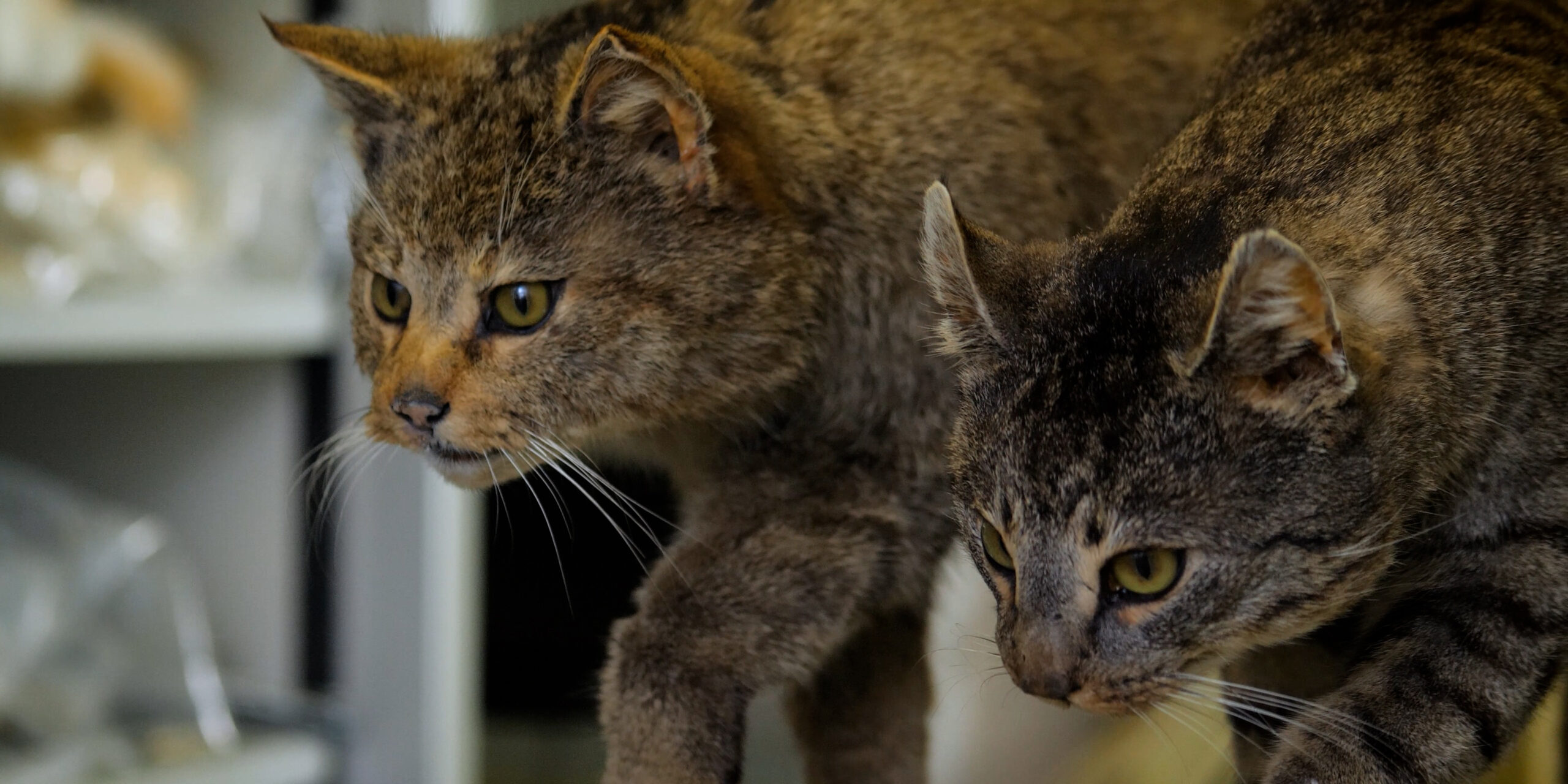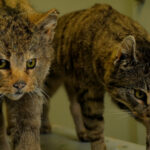What does genetic interbreeding mean for the wildcat?
A definite distinction between a wildcat and a domestic cat is usually achieved by DNA testing. But what happens when wilcat and domestic cat mate? Because the two subspecies can reproduce, there will be an intermingling of their DNA. The fertile offspring are genetic crossbreeds. Accordingly, they are “hybrids” (lat. hybrida) of the two subspecies domestic cat (Felis silvestris catus) and wildcat (Felis silvestris silvestris).
Why is it important to study hybridization in the wildcat?
Hybridization can lead to an increase in genetic diversity as well as adaptations to changing environmental conditions. Equally, however, it can also result in reduced fitness, the spread of maladapted genes, or competition between subspecies and hybrids.
With regard to habitat fragmentation, genetic diversity is important. If no mate of the own subspecies is to be found, wildcats can only reproduce with domestic cats. The estimated wildcat populations in Germany are proportionally equivalent to only 0.01% of the free-ranging domestic cats. A genetic flooding by hybridization can in extreme cases lead to the consequence that the wildcat genetically at some point does not longer exist. This involves interspecific mating with a species that is accustomed to humans. Egyptians probably domesticated the house cat 4,000 to 2,000 years BC until the Romans brought it to Europe 2,000 years ago. In any case, it is descended from the African dun cat (Felis lybica lybica). Their nutrition contains in contrast to the wildcat partly also at vegetable components. Evolutively this led to a longer intestine. Also in their behavior they differ strongly from the wildcat, which always remains shy even when raised by humans. The interbreeding therefore affects the fitness, ecology and behavior of the hybrids.
Hybridization in Europe and Germany
In many parts of Europe, hybridization of the wildcat is low. Likewise, hybridization does not pose a threat in Germany. Due to the habitat requirements of the wildcat, it rarely encounters the domestic cat. In a study of 11,000 hair samples within the framework of the BUND project “Rettungsnetzt Wildkatze”, the hybridization with the domestic cat amounted to 3%. Another study of more than 1,000 dead animals from mainly central and western Germany showed an average hybridization rate of 3.2%. This is negligible, says the chief preparator of the Phyletisches Museum Jena, Matthias Krüger. He also explains this with the typical behavior of wildcat and domestic cat in Germany. This means that when domestic and wild cats interbreed, the offspring’s behavior is always determined by that of the mother. They either it grows up near or far away from settlements and humans. Therefore, a repeated interbreeding of both subspecies in the next generations is rather unlikely.
The situation is different in Scotland and Switzerland, for instance. Due to the increased urbanization of the landscape (e.g. in alpine pasture farming), there is a much greater overlap in the distribution areas of domestic and wildcat in Switzerland. Because of this, the two subspecies meet much more frequently.
The projekt The Return of the Wildcat The project The Return of the Wildcat aimed to show recordings of European wildcats. Due to the low hybridization of the project area in the area of Jena, a phenotypic determination is thus possible with higher certainty. Matthias Krüger accompanied the project and can be seen in the film as a wildcat expert.
Literature
BUND Wildkatzen-Symposium 2016. Strategien für die Biotopvernetzung bis 2025
Felicita Urzi, Nikica Šprem, Hubert Potočnik et al. Population genetic structure of European wildcats inhabiting the area between the Dinaric Alps and the Scardo-Pindic mountains, 29 April 2021, PREPRINT (Version 1) available at Research Square https://doi.org/10.21203/rs.3.rs-443648/v1
Quilodrán CS, Nussberger B, Macdonald DW, Montoya-Burgos JI, Currat M. Projecting introgression from domestic cats into European wildcats in the Swiss Jura. Evol Appl. 2020;13:2101–2112. https://doi.org/10.1111/eva.12968
Tiesmeyer, A., Ramos, L., Manuel Lucas, J. et al. Range-wide patterns of human-mediated hybridisation in European wildcats. Conserv Genet 21, 247–260 (2020). https://doi.org/10.1007/s10592-019-01247-4



